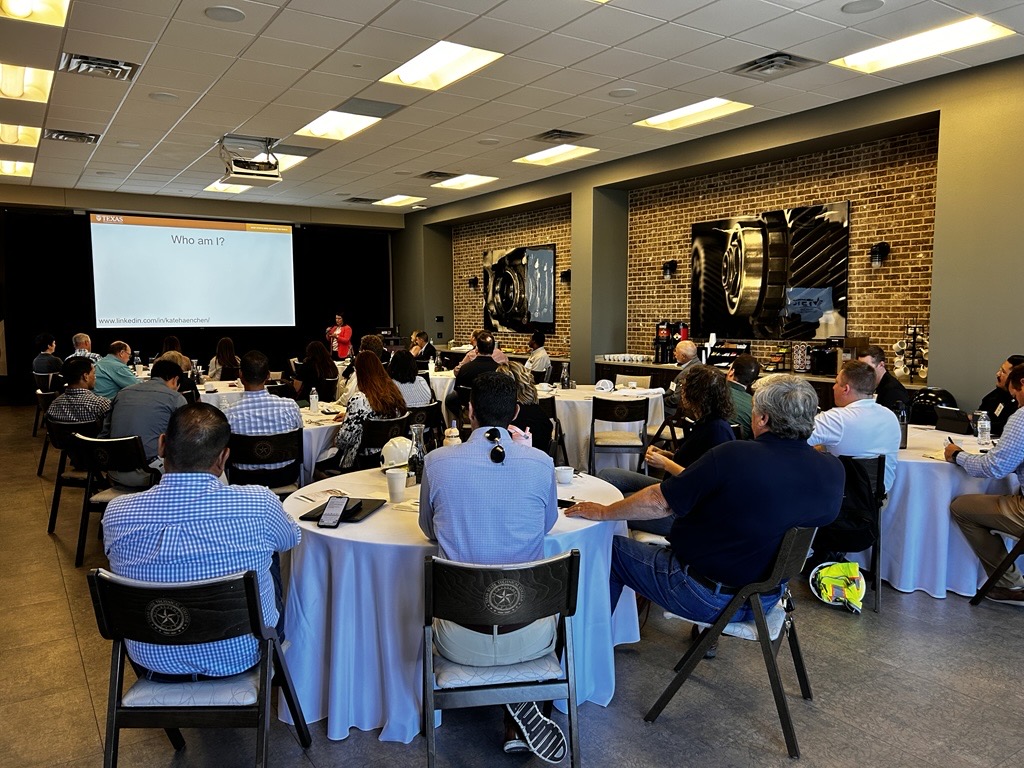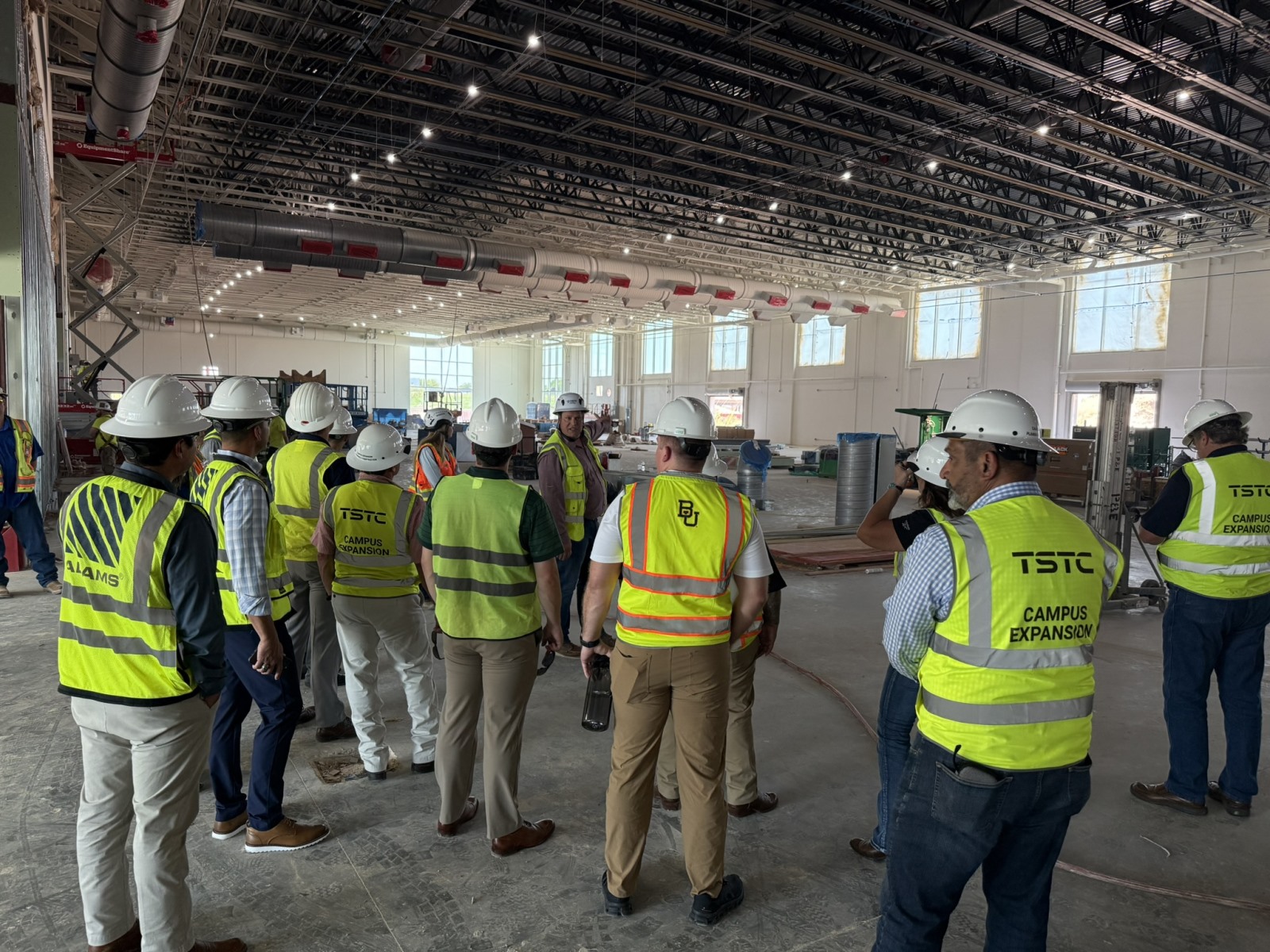COAA Texas Owners-Only Forum Held in Waco, TX
 |
 |
Approximately 30 Owners from various healthcare systems, universities, state and county agencies gathered at the state’s leading vocational training college, Texas State Technical College (TSTC), for a full day of learning and networking.
Session 1: An Overview of Texas State Technical College’s Capital Projects Program
Speakers: Rick Herrera, Senior Vice Chancellor & Chief Campus Expansion Officer, and Jay Wesson, Senior VP of Campus Expansion Planning & Construction
Our event hosts, Rick Herrera and Jay Wesson kicked off the event by providing an overview of the two-year institution which offers high-demand technical and vocational education across Texas. TSTC’s funding model for student programs is different than other state universities. It is100% outcomes-based, dependent upon the post-graduation earnings and job placements of its students, incentivizing the college to train highly skilled workers for in-demand jobs. TSTC offers its students a “money-back” guarantee that the students will receive a job offer within six months of graduation or they will refund students’ tuition.
Rick and Jay updated everyone on the capital projects under construction across the state and introduced members of their growing planning and construction team. They also discussed their evolving approach to project delivery including:
- They hire design teams through an IDIQ contract to provide design for large capital projects as well as more traditional IDIQ assignments for renovations, additions, etc.
- TSTC solicits construction manager-at-risk contracts for each of its major capital projects and awards JOC contracts for smaller projects. This approach helps them streamline the negotiation process.
- TSTC augments its project management staff with independent construction management firms to help protect owner interests.
- They also hire third-party auditors and pay app reviewers to ensure financial accuracy.
TSTC emphasizes collaboration and transparency in their teams and vendor partners. They strive to create win-win relationships among the contractors, design teams, and campus representatives.
Session 2: A Robust Planning Process Paves the Way for Design & Construction Services
Speaker: Kate Haenchen Jimenez, Director of Planning, The University of Texas at Austin
Kate Jimenez has been helping The University of Texas at Austin improve its planning process for capital projects for the last four years. To put the planning process in perspective, Kate shared a few stats about The University:
- 52,000 students
- 431 acres on main campus
- 639 buildings / 20M+ SF.
She kicked off the presentation with a use case for a strong front-end plan, walking the audience through a three “failure to plan” case studies: a massive change order on a building expansion, a budget bust during a building renovation, and human error during design of a building addition. She then described how her team has been slowly transforming the process for capital project delivery:
1. Added a “Planning” step that occurs before the definition phase of the process.
2. Reformatted the existing process to have more checks and balances between steps.
3. Instituted a bi-weekly capital advisory board meeting for site approval and feasibility justification before a capital project request can be submitted.
4. Developed a 10-Part Capital Project Request Form to identify key issues (expected benefits, program basis, funding strategy, construction impacts, risks, etc.)
Her biggest keys to successful front-end planning included:
- Engage stakeholders early
- Conduct lessons learned on every project
- Integrate project planning with long-term master planning
- Align policy and institutional strategy
- Address deferred maintenance
- Embed planning with policies
- Align space needs with mission and values.
To gain buy-in Kate’s team embraces UT’s tagline, “What starts HERE changes the world,” emphasizing the role her team plays in planning facilities that shape that impact. In conclusion, Kate’s key take-aways:
- Think slow to build fast.
- Transparency is a small investment for a massive return.
- Process does not have to be concrete to start.
- It takes time to switch from being reactive to proactive.
After lunch, Julie Lucas, Associate Vice President, Facilities Planning, Design and Construction, The University of Texas Health Science Center at Houston, facilitated that Owners roundtable, a venue for attendees to deep dive into any questions, concerns, best practices, and lessons learned from each other.
The day wrapped up with a tour of TSTC’s latest building under construction, the Technology Center, a two-story concrete tilt-wall building designed with open labs, which will open in the Spring semester of 2026.
